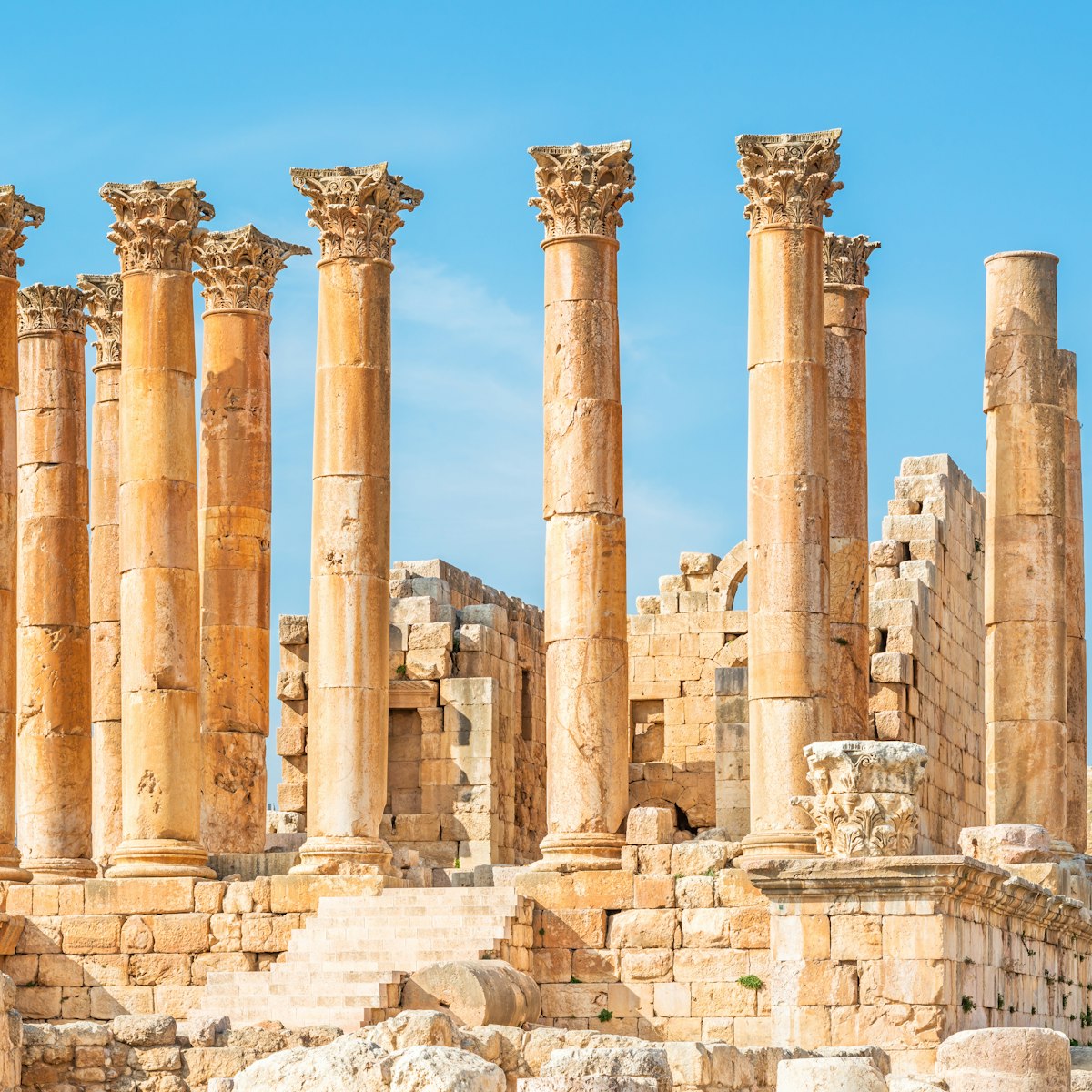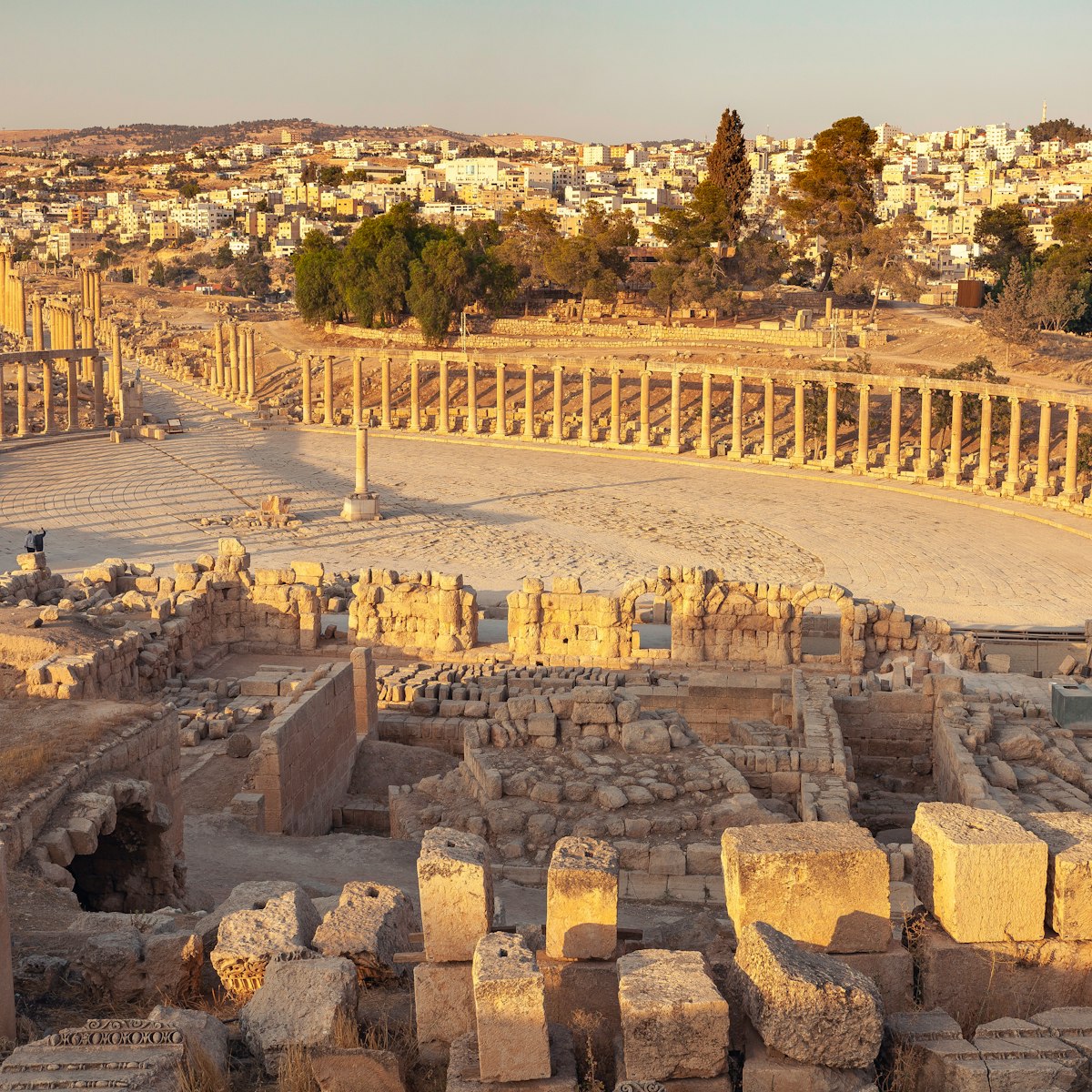When Christianity became the state religion under Emperor Constantine in 324, all Roman monuments that were tainted by so-called pagan practices were abandoned. These structures were subsequently pilfered for building materials as Roman cities competed with one another to build glorious churches and cathedrals. A total of 15 churches lie among Jerash's ruins, with the Church of St Cosmos & St Damianus (look for a complex with four bulbous columns and a thick outer wall) one of the best preserved.
Consecrated in 533 in memory of twin brothers – both doctors, who devoted themselves to the care of the poor and the needy, and who were martyred during the reign of Diocletian – the church boasts the best-preserved mosaics at Jerash. Stand above the retaining wall and you can clearly make out zoomorphic figures, geometric designs and medical symbols. Some of the mosaics from this church are now housed in the Museum of Popular Traditions in Amman.
Continue up the hill and just before you reach the great temple in front of you, sit on the stone sarcophagus nearby and survey the view: this is one of the best vantage points in Jerash, showing the extent of the ruins from North Gate to Hadrian’s Arch.







